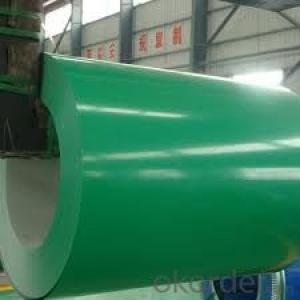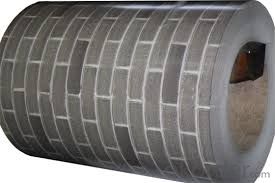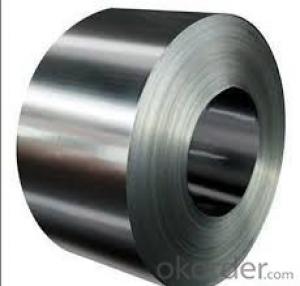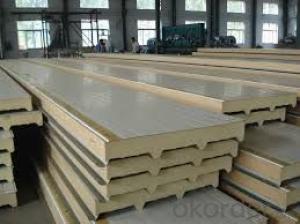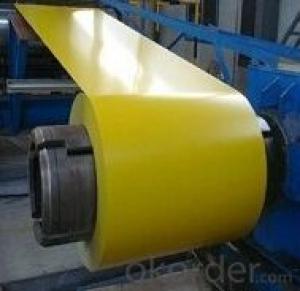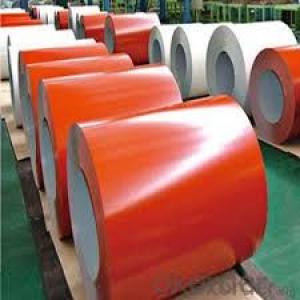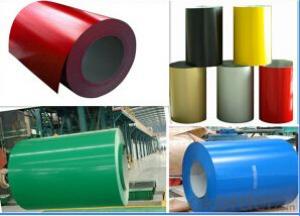PPGI Prepainted Galvanized Steel Coil/Pre-Painted Galvanized (PPGI) Color Coated Steel Coil
- Loading Port:
- China main port
- Payment Terms:
- TT OR LC
- Min Order Qty:
- 25 m.t.
- Supply Capability:
- 1000 m.t./month
OKorder Service Pledge
OKorder Financial Service
You Might Also Like
Product Description
Pre-painted Galvanized Steel Coil
PPGI is made by cold rolled steel sheet and galvanized steel sheets as baseplate,
Through the surface pretreatment (degreasing, cleaning, chemical conversion
Processing), coated by the method of continuous coatings (roller coating method),
And after roasting and cooling.
SPECIFICATION
1. Standard: AISI, ASTM, BS, DIN, GB, JIS
2. Grade: DX51D+Z, DC51D, SPCC, SGCC, SGHC, CGCC,
3. Surface Treatment Coated: Galvanized, Paint sealant, Coating passivation solution
Substrate Cold rolled, Galvanized sheet
4. Color: RAL Color card
5. Coil ID: 508/610 mm
6. Coil weight: 4-10MT
7. Paint film Front side: 10~25um
Back side: 5~10um
8. Zinc layer: 40~180g per square meter
9. Thickness: 0.14~3.0mm
10. Width: 400~1500mm
11. Length: As requirement
12. Type: Steel plate, Steel Coil, Roofing metal
13. Place of origin: Shandong CHINA(mainland)
14. Deliver time: 20-30 days after receipt of advanced t/t or L/C
Advantages
1. Our company produce various specification and models and national standards of galvanized steel coil
2. Using high-quality material and advanced production technology and equipment for processing
3. Applicable to a humid climate and the harsh corrosive environment
4. Products has been all over the country more than 20 provinces, municipalities and
Autonomous regions, and have been exported to Europe, North American, the Middle East,
The South East Asia, Africa, Asia, European and other countries and regions, well received by our buyer.
commodity | Color-coated Galvanized Steel Coil (PPGI/ PPGL) |
Techinical Standard: | JIS G3302-1998, EN10142/10137, ASTM A653 |
grade | TSGCC, TDX51D / TDX52D / TS250, 280GD |
Types: | For general / drawing use |
Thickness | 0.14-2.0mm(0.16-0.8mm is the most advantage thickness)) |
Width | Width: 610/724/820/914/1000/1200/1219/1220/1250mm |
Type of coating: | PE, SMP, PVDF |
Zinc coating | Z60-150g/m2 or AZ40-100g/m2 |
Top painting: | 5 mic. Primer + 15 mc. R. M. P. |
Back painting: | 5-7 mic. EP |
Color: | According to RAL standard |
ID coil | 508mm / 610mm |
Coil weight: | 4--8MT |
Package: | Properly packed for ocean freight exportation in 20' ' containers |
Application: | Industrial panels, roofing and siding for painting / automobile |
Price terms | FOB, CFR, CIF |
Payment terms | 20%TT in advance+80% TT or irrevocable 80%L/C at sight |
delivery time | 25 days after recepit of 20% TT |
Remarks | Insurance is all risks |
MTC 3.1 will be handed on with shipping documents | |
We accept SGS certificatation test |
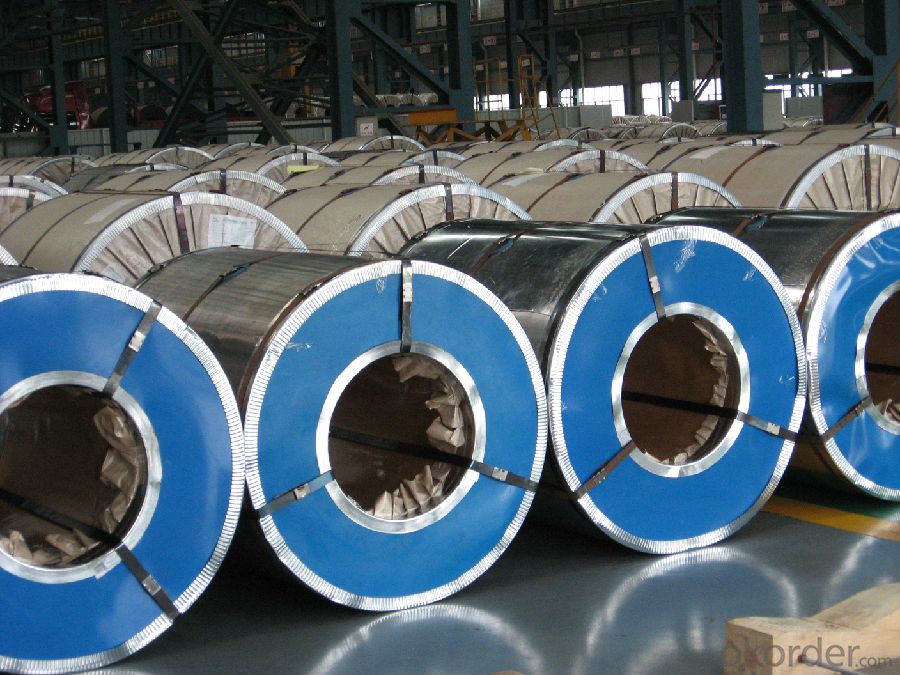
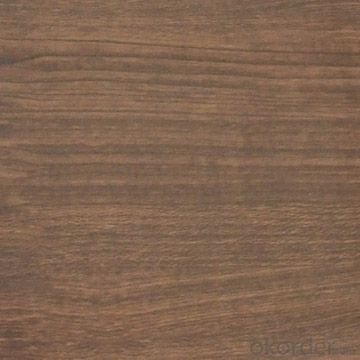
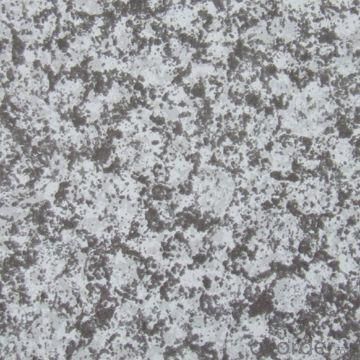
- Q: Want to construct a patio cover approx. 20 feet long. Only want to use a 6x6 or 8x8 post at each end. What size steel i-beam would I have to use to carry the load???
- Probably the reason some contractors don't like this idea is that your new built-up beam, being only 6 tall, is not going to allow the joists above to attach effectively. The triple microlam with steel plates is sooooooo overkill in strength, but doesn't have the height to allow the floor joists to proberly attach. Your span is not so great that a built-up beam wouldn't work great. Assuming that your second floor joists are 2 x 10, I would use 2- 2 x 10 with 1/2 plywood sandwiched between. This is all that you really need.
- Q: How are steel coils used in the manufacturing of metal containers?
- Steel coils are used in the manufacturing of metal containers as they are typically unrolled and cut into specific sizes and shapes to form the body of the container. These steel coils provide strength and durability to the containers, making them suitable for storing various products such as food, beverages, chemicals, and more.
- Q: How are steel coils protected against moisture and humidity?
- Steel coils are typically protected against moisture and humidity through various methods such as applying a protective coating or wrapping the coils with moisture-resistant materials, such as plastic or wax paper. Additionally, storing the coils in a dry and controlled environment, such as a warehouse with proper ventilation, helps prevent moisture absorption.
- Q: How are steel coils used in the production of electronic devices?
- Steel coils are used in the production of electronic devices for various purposes, such as creating magnetic fields, providing structural support, and acting as conductors in transformers and inductors. These coils are typically wound around a core material, such as ferrite or laminated iron, to enhance their magnetic properties and improve their performance in electronic circuits.
- Q: How are steel coils used in the production of rail tracks?
- Steel coils are used in the production of rail tracks as they are a primary raw material for manufacturing the rails. These coils are first processed to form the desired shape and dimensions of the rail tracks, which are then cut, welded, and shaped to create the individual rail sections. The steel coils provide the strength, durability, and flexibility necessary for the tracks to withstand heavy loads, extreme weather conditions, and constant use.
- Q: Are Steel Building Kits really helpful while erecting a steel building?
- Of course yes! Steel building kit is design specific corresponding to the type of steel building required to be constructed or erected. The steel building kit consists of all the necessities needed by the purchaser or the investor. As steel buildings are prefabricated or pre-engineered they are manufactured in factories in various sections and parts which are to be brought to the construction site to be assembled. So in any case they are beneficial :)
- Q: I am a beginner and have a slow to average swing speed. Should i get graphite or steel shafts for my irons and does it make a difference?
- I guess this is what makes horse races. In irons steel is better than graphite all day every day. Indeed graphite has come a long way but it has a longer way to go. Steel is far more stable and consistent. It is also less expensive if you care. Graphite makes sense in the driver because we are willing to sacrifice accuracy for distance. How many Pros (even theLPGA) do you see with graphite shafts in their irons ?
- Q: How are steel coils protected from condensation?
- Steel coils are protected from condensation through a variety of methods including the application of moisture-resistant coatings, the use of desiccants or drying agents, and the implementation of proper storage and handling techniques such as maintaining appropriate temperatures and humidity levels.
- Q: i want a good modern carbon steel (not stainless) knife. trying to keep it under 50$ also nothing to gruesome just a small pocket knife. thank you
- Well, okorder /... They did make other folders in M2 steel, but the thing is those are out of production and the cost is very high. Spyderco made M4 steel folder knives, and so did Benchmade. Although,both are outside of 50$ budget. I guess Opinels are best option.
- Q: i am working a client.my vendor specified in pipe specification pipe line class as MS1 (code for Mild steel)but assigned material to this code is cs smls astm A 106B.my question is any difference between CS and MS material?pls suggest me
- The terms mild steel and carbon steel are general terms and do not refer to a specific grade of steel. If your client asked for A106B then that is what you need to ask your vendor to quote you. If MS1 references A106B then again, that is what you get prices for.
Send your message to us
PPGI Prepainted Galvanized Steel Coil/Pre-Painted Galvanized (PPGI) Color Coated Steel Coil
- Loading Port:
- China main port
- Payment Terms:
- TT OR LC
- Min Order Qty:
- 25 m.t.
- Supply Capability:
- 1000 m.t./month
OKorder Service Pledge
OKorder Financial Service
Similar products
Hot products
Hot Searches
Related keywords
